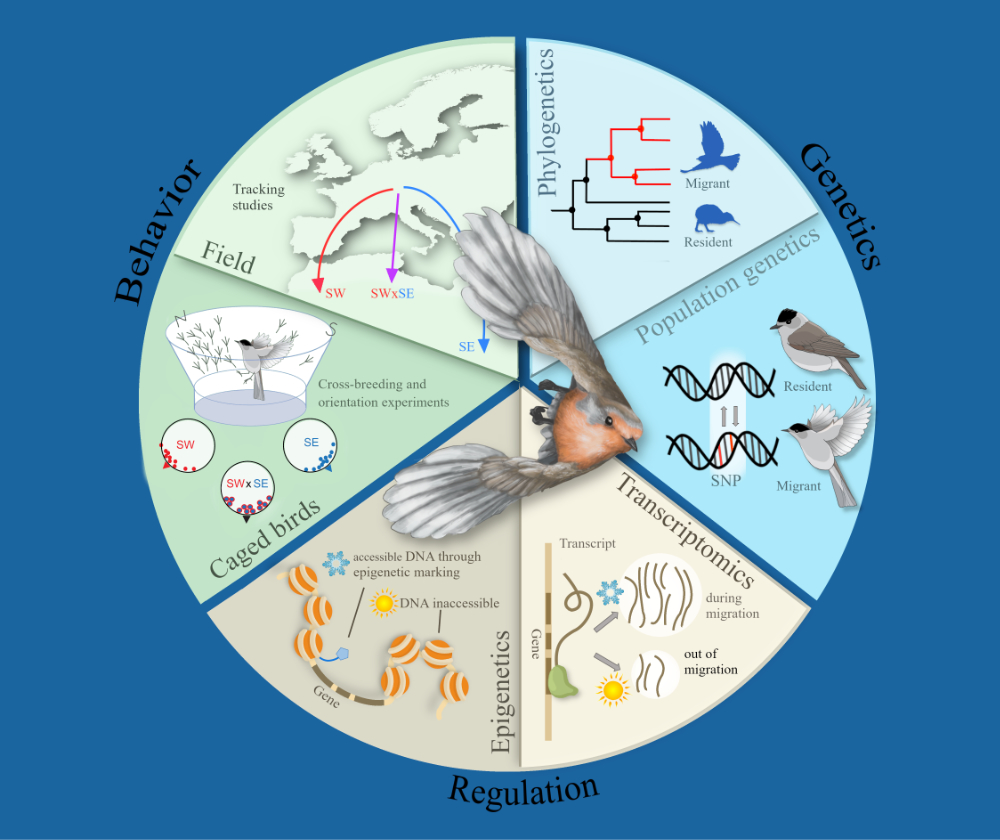Speaker
Description
How multitrait phenotypic polymorphisms that are geographically structured can be mantained in a highly mobile and panmictic species is difficult to explain. However, that is what we observe in the common quail (Coturnix coturnix), a small migratory galliform that moves widely during the breeding season following ephemeral habitats, in search of sequential matings and with successive clutches at different locations while migrating. We used population genomics and cytogenetics to explore the basis of this polymorphism and discovered that it is induced by a large inversion in the genome of the common quail, which extends 115 Mbp in length and encompasses about 12% of the genome. Quails with the inversion are larger, have darker throat coloration and rounder wings (what is related to poorer flight efficiency). Stable isotope analyses confirmed that birds carrying the inversion migrate shorter distances or do not migrate. These quails are geographically restricted despite the high mobility of the species, to the Macaronesian islands, Morocco and Southern Iberian Peninsula. Moreover, we found no evidence of pre- or post-zygotic isolation, indicating the two forms interbreed while the differences are mantained and that the polymorphism remains locally restricted because of the effect of the chromosomal inversion over their migratory behavior.

